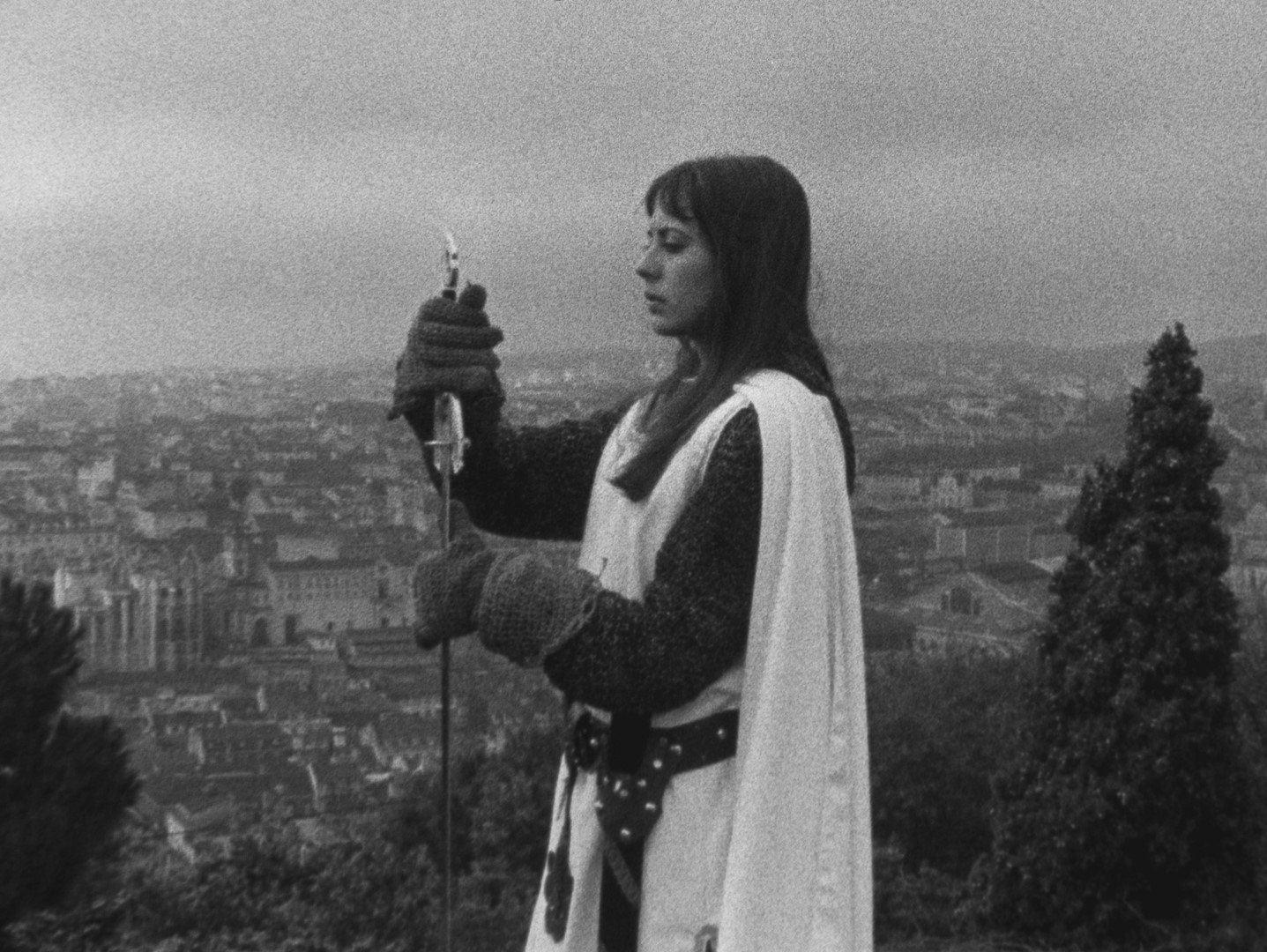Early next year, just over two decades since his death in 2003, new restorations of the films of João César Monteiro are set to tour Europe and the United States. These include his celebrated trilogy of comedies—Reminisces of the Yellow House (1989), God’s Comedy (1995), and God’s Marriage (1998)—for which he’s best known, alongside more off-beat pictures like The Hips of John Wayne (1997) and Come and Go (2003), in which he also stars.
Less likely to draw the same attention is Monteiro’s second feature, What Shall I Do With This Sword? (1975), which was completed in the year following the Carnation Revolution of April 1974. As with similar political upheaval in France, Japan, and the United States, the popular overthrow of what remained of the Salazar government produced a flurry of filmmaking. The most important of these films from a historical perspective is probably The Guns and the People (1975), a kind of Portuguese ciné-tract to which many of the generation’s most talented filmmakers, including Monteiro and his wife Margarida Gil, anonymously contributed footage. Gil’s documentary short Clínica Popular Comunal da Cova da Piedade (1975)—which screens today alongside Monteiro’s feature—is emblematic of the spirit of this filmmaking. Shot in a health clinic operating out of a former palace expropriated by protestors, the new owner explains how even the street needed to be renamed from “Rua Dr. Oliveira Salazar” to “Rua da Liberdade.” Cutting between different patients, some too poor to go to other clinics and others with nowhere else to go, Gil sutures together an image of the base of this popular movement.
What Shall I Do With This Sword? emerges from this same momentum. Habit encourages me to describe the film as a documentary as well, but that label requires one to leave out the key elements forming the figural basis of Monteiro’s visual mélange: the scenes of Nosferatu’s arrival at the fictional German port of Wisborg from F.W. Murnau’s 1922 feature, on the one hand, and footage of Gil standing on the shore dressed in the attire of the Knights Templar on the other. It’s Gil who poses the title question in the film’s final reel, though the reference is to a poem drawn from Fernando Pessoa’s collection Mensagem (1934), named after the first ruler of historic Portugal. The introduction of these elements points to a larger scope than what’s suggested by the film’s opening focus on workers protesting the NATO battleships stationed in Portuguese waters. The intercutting between the arrival of Nosferatu’s ship and the NATO submarines entails not simply the critique of ongoing American imperialism, but equally of Portugal’s role as the oldest naval power of the great European colonial empires, and one of the last to survive the twentieth century. Like Pessoa, Monteiro grapples here with a macro, mytho-poetic historical scope comparable not only to his next feature, Veredas (1978), but also, as the critic Bruno Andrade suggests, to Alexander Dovzhenko and perhaps more recently to Jia Zhangke.
Clínica Popular Comunal da Cova da Piedade + What Shall I Do with this Sword? screen this evening, November 5, at the Museum of Modern Art as part of the series “The Ongoing Revolution of Portuguese Cinema.”



